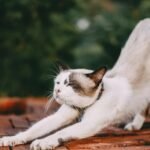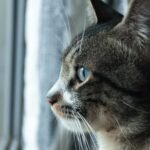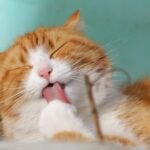Have you ever dreamed of having a pet with the heart of a housecat but the wild beauty of a leopard or tiger? It sounds like a fantasy, but for some bold cat lovers, it’s a reality. Wild cat hybrids are taking the pet world by storm, offering a breathtaking blend of exotic looks and domestic affection. But before your imagination runs wild, there’s a lot more to these cats than meets the eye. Get ready to be surprised, enchanted, and maybe even a little shocked as we explore the top five wild cat hybrids that still make loving pets. These spectacular felines might seem untamable, but many have stolen the hearts of families everywhere. Are you ready to meet the new wild side of pet companionship?
What Are Wild Cat Hybrids?

Wild cat hybrids are the special result of crossing a domestic cat with a wild feline species. The goal is to combine the striking appearance and mystique of their wild ancestors with the gentler, more manageable personality of house cats. This unique mix can create cats that look like mini leopards, tigers, or even pumas, but can curl up at your feet at the end of a long day. Breeding these hybrids isn’t simple—it requires careful selection, patience, and a deep understanding of both wild and domestic feline behavior. Most hybrids are several generations removed from their wild ancestors, which helps mellow out their personalities. If you’ve ever wanted a wild-looking companion without the untamable attitude, these hybrids might just make your dreams come true.
The Allure of Exotic Looks

Let’s be honest—part of the fascination with wild cat hybrids is how stunning they look. These cats often sport dramatic spots, marble patterns, or strikingly large ears reminiscent of their wild heritage. Imagine a cat that looks like it stepped right out of a jungle, yet is happy to chase a toy mouse in your living room. Their coats can glimmer with gold, silver, or deep bronze hues, and their eyes seem to hold secrets of ancient forests. This exotic beauty has made hybrids incredibly popular on social media, where their photos rack up thousands of likes. Yet, beneath these mesmerizing appearances, many of these cats have loving and playful personalities that quickly win over their families.
The Importance of Responsible Breeding

Not all wild cat hybrids are created equal. Responsible breeders play a crucial role in ensuring the health and wellbeing of these special felines. It takes years of careful planning, genetic testing, and socialization to produce hybrids that are both beautiful and safe to have as pets. Ethical breeders prioritize temperament as much as looks, aiming for cats that are confident, affectionate, and adaptable to home life. They also provide new owners with support and guidance, making sure they’re prepared for the unique challenges hybrids can bring. Without this commitment, hybrids could easily end up with unpredictable personalities or health problems. If you’re considering bringing one home, always do your homework and choose a reputable breeder.
The Savannah Cat: A Wild Spirit with a Gentle Heart

The Savannah cat is probably the most famous wild cat hybrid in the world. Created by crossing a domestic cat with the African serval, the Savannah is a breathtaking blend of wild energy and domestic charm. With its long legs, large ears, and bold spots, it looks like a tiny cheetah—yet it can be just as affectionate as any housecat. Savannahs are known for their intelligence and curiosity; they love to play fetch, solve puzzles, and even learn tricks. Many owners describe them as more “dog-like” than cat-like in their loyalty and playfulness. Despite their wild roots, well-socialized Savannahs often bond deeply with their families and can get along with other pets. However, their high energy means they need lots of space, enrichment, and attention.
The Bengal Cat: Jungle Grace in the Living Room

Bengals are the dazzling result of crossing domestic cats with the Asian leopard cat. Their coats are covered in rosettes or marbled patterns that shimmer in the sunlight, making them look like miniature leopards. But it’s not just about looks—Bengals are known for their athleticism and boundless curiosity. They love to climb, jump, and splash in water, often turning the simplest household objects into toys. Bengals crave attention from their humans and can be very vocal when they want cuddles or playtime. With the right environment and plenty of stimulation, Bengals form strong bonds with their families and can even get along with children and other pets. Their wild beauty paired with affectionate personalities has made them one of the most popular hybrids worldwide.
The Chausie: The Adventurer’s Dream
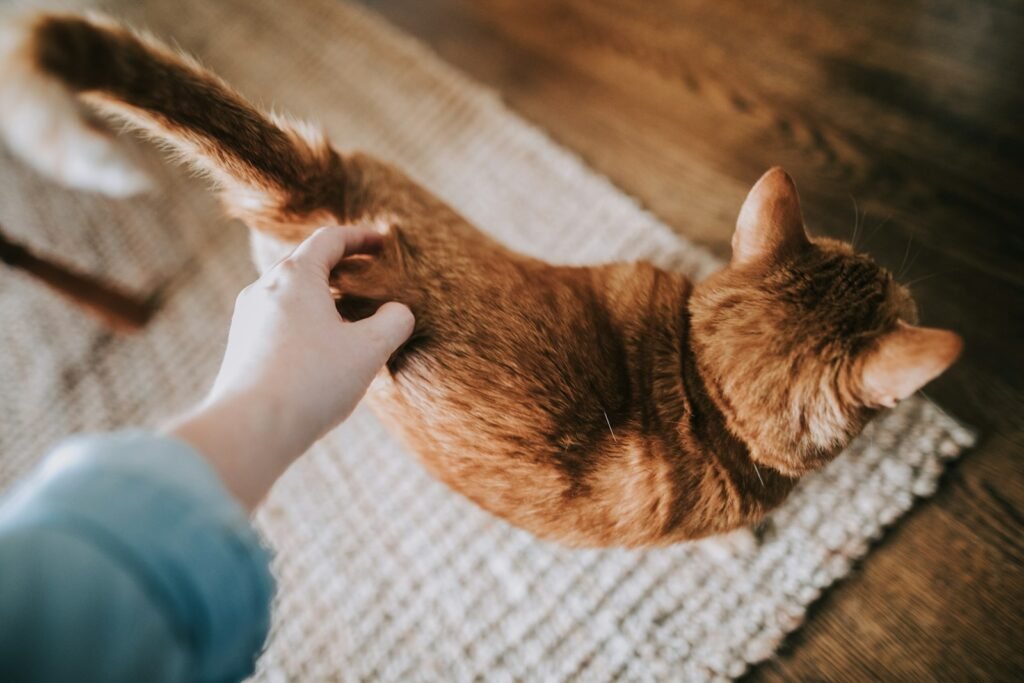
The Chausie cat comes from crossing domestic cats with the jungle cat, a wild feline native to Asia. These hybrids are built for adventure, with long, sleek bodies and a strong, athletic build. Chausies are incredibly active—they need space to run, climb, and explore. If you love the idea of a cat that joins you on backyard expeditions or even leash walks, the Chausie could be your perfect companion. Despite their wild appearance, Chausies can form deep bonds with their owners and often crave human attention. They’re known for their intelligence and can learn to play fetch or open doors. But their adventurous spirit means they need an engaged, attentive owner who can keep up with their energy and curiosity.
The Caracat: The Rare Beauty

The Caracat is one of the rarest and most striking wild cat hybrids, born from crossing a caracal with a domestic cat. Caracats are famous for their dramatic tufted ears and muscular, athletic frames. Their eyes have an intense, almost hypnotic gaze that hints at their wild ancestry. These hybrids are still quite rare, and most available Caracats are several generations removed from the original cross. Caracats can be surprisingly affectionate and playful, forming close bonds with their families. However, they do require a confident, experienced owner who can provide plenty of mental and physical stimulation. Their rarity and unique needs mean they aren’t for everyone, but for those who are up for the challenge, Caracats are unforgettable companions.
The Cheetoh Cat: The Gentle Giant

The Cheetoh cat is a newer hybrid, created by crossing Bengals with Ocicats—another breed that mimics the look of wild felines. The result? A large, muscular cat with a soft, spotted coat and a personality that’s as sweet as its name. Cheetohs are known for being gentle giants, often seeking out cuddles and affection from their humans. They’re playful, intelligent, and get along well with other pets, making them a great choice for families. Despite their wild appearance, Cheetohs are known for their stable, loving temperaments. They thrive in active homes where they can play and interact with people throughout the day.
Understanding Hybrid Generations: F1, F2, and Beyond
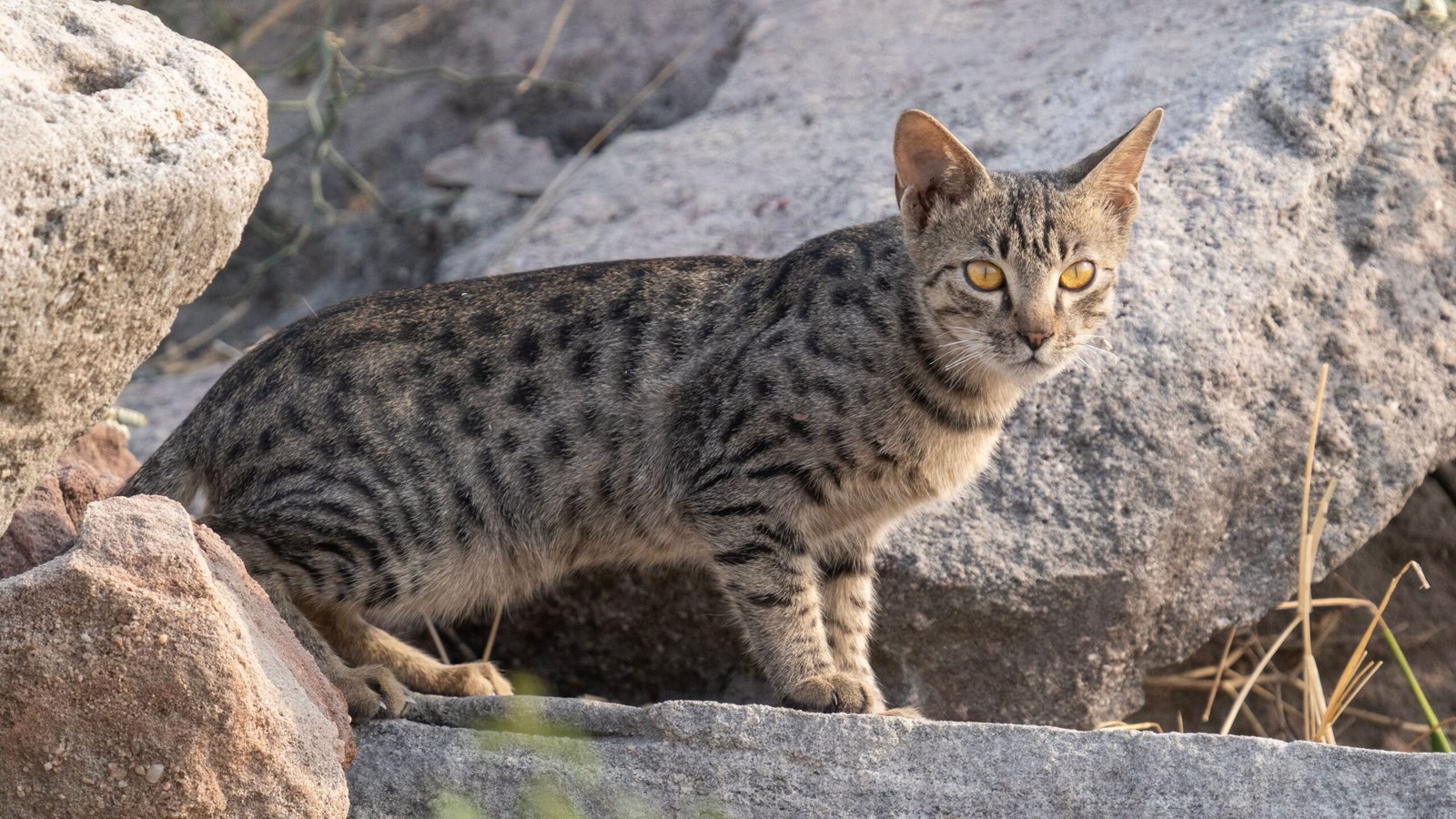
When it comes to wild cat hybrids, you’ll often hear terms like F1, F2, or F3. These refer to how many generations removed the cat is from its wild ancestor. F1 hybrids are the direct offspring of a wild parent and a domestic parent, and usually have the most wild traits—both in looks and behavior. F2 and F3 hybrids are further generations, with each step usually bringing a calmer, more domesticated personality. By the time you reach F4 or F5, most hybrids are well-suited for family life, although they still retain their wild looks. Understanding these generations is important when choosing a hybrid, as it affects everything from temperament to legal restrictions.
Legal Considerations and Restrictions

Before falling in love with a wild cat hybrid, it’s crucial to check local laws and regulations. Some countries, states, or cities have strict rules about owning hybrids—especially those closest to their wild ancestors. F1 and F2 hybrids are often subject to bans or require special licenses, while later generations are usually more widely accepted. These laws exist to protect both animals and the public, ensuring hybrids are safe and well cared for. Always research your area’s regulations before bringing home a hybrid cat, as breaking the rules can lead to heartbreak and legal trouble. A responsible owner is an informed owner.
Personality Traits: Wild vs. Domestic

Wild cat hybrids don’t just look different—they can act different, too. Many hybrids are more energetic, curious, and intelligent than typical house cats. They may be more vocal, more prone to climbing, or more interested in water. Some even enjoy playing fetch or learning tricks, blurring the lines between cat and dog behavior. At the same time, hybrids can be sensitive to changes in their environment and may need more time to adjust to new people or places. With patience, socialization, and plenty of positive attention, most hybrids become loving, loyal companions who thrive in a stimulating home.
Daily Care and Enrichment Needs

Caring for a wild cat hybrid is a bit like caring for a toddler—expect the unexpected. These cats need more stimulation and activity than your average domestic feline. Cat trees, puzzle toys, interactive games, and plenty of playtime are essential to keep them happy and prevent boredom. Some hybrids enjoy leash walks or supervised outdoor adventures, giving them a safe way to burn off energy. Regular grooming is important, too, especially for breeds with dense or plush coats. Providing a rich, engaging environment isn’t just a luxury—it’s a necessity for these intelligent, active cats.
Feeding Wild Cat Hybrids

Wild cat hybrids often have unique dietary needs, especially those closest to their wild ancestors. Many thrive on high-protein, grain-free diets that mimic what their wild relatives would eat. Some owners even choose to feed raw or specially formulated diets to meet their cats’ nutritional requirements. It’s important to work with a veterinarian experienced in exotic or hybrid breeds to develop the best feeding plan. Poor nutrition can lead to health problems or behavioral issues, so don’t cut corners when it comes to your hybrid’s diet. A healthy hybrid is a happy hybrid.
Training and Socialization

Training a wild cat hybrid can be a rewarding challenge. These cats are quick learners and often enjoy interactive training sessions using treats and positive reinforcement. Teaching basic commands, tricks, or even leash walking can help channel their energy and strengthen your bond. Early and consistent socialization is key, especially for kittens—exposing them to different people, pets, and environments helps them become well-adjusted adults. Patience and understanding go a long way, as hybrids can be more sensitive or stubborn than typical house cats. The effort pays off, though, with a cat that’s confident, curious, and connected to its family.
Living with Other Pets

Many wild cat hybrids can live happily with other pets, but introductions should be made carefully and gradually. Hybrids often have strong prey drives, so small animals like birds, hamsters, or fish may not be safe around them. However, with proper socialization, hybrids can get along well with dogs or other cats—sometimes forming deep, lifelong friendships. Every hybrid is an individual, so pay close attention to their behavior and comfort level during introductions. Supervised play and slow, patient acclimation usually lead to the best results.
Children and Wild Cat Hybrids

Hybrids can make wonderful family pets, but it’s important to teach children how to interact with them safely and respectfully. These cats may not tolerate rough handling or loud noises as well as some domestic breeds. Teaching kids to read feline body language and giving hybrids space when needed helps prevent misunderstandings. Many hybrids are affectionate and playful with children, especially when raised together from a young age. Supervision is always recommended, and positive experiences early on set the stage for a loving, lifelong bond.
Common Health Concerns

Like all cats, wild cat hybrids can be prone to certain health issues. Some hybrids may inherit genetic conditions from their wild ancestors, while others may be more sensitive to stress or environmental changes. Regular veterinary care, vaccinations, and parasite prevention are essential. Hybrids are also more likely to develop dietary sensitivities, so pay attention to any signs of digestive upset or allergies. Working with an experienced veterinarian who understands hybrids can help catch potential problems early and keep your pet healthy for years to come.
Long-Term Commitment and Lifespan

Owning a wild cat hybrid is a long-term commitment that can last 12 to 20 years, depending on the breed and individual health. These cats need consistent care, attention, and enrichment throughout their lives. They may require more veterinary visits, special diets, or even modifications to your home to keep them safe and happy. Before bringing one home, consider your lifestyle, living situation, and ability to meet their unique needs. A well-cared-for hybrid brings years of joy, companionship, and unforgettable memories.
The Emotional Bond: Are Hybrids as Loving as Domestic Cats?

Despite their wild roots, many hybrids form incredibly strong emotional bonds with their families. They may express affection differently—through play, head-butts, or simply by being in the same room as you. Owners often describe their hybrids as loyal, attentive, and deeply connected to their chosen humans. Building this bond takes time, patience, and understanding, but the rewards are immense. There’s something uniquely special about earning the trust and love of a cat with wild ancestry. For many, it’s an experience unlike any other.
Finding the Right Hybrid for You

Choosing the right wild cat hybrid comes down to personality, lifestyle, and experience. Some hybrids are better suited for active families, while others thrive in quieter homes. Consider the cat’s energy level, social needs, and any special requirements before making a decision. Talk to breeders, meet different hybrids, and ask plenty of questions. When you find the right match, you’ll discover a pet that brings the wild into your world in the most loving way possible.
Is a Wild Cat Hybrid Right for Everyone?

Wild cat hybrids aren’t for everyone. They require more time, attention, and commitment than most domestic cats. Their needs can be demanding, and not all homes are equipped to handle their energy or curiosity. However, for those willing to rise to the challenge, hybrids offer a unique, rewarding pet experience. If you’re drawn to their beauty, intelligence, and spirit—and are ready to put in the work—you may find that a wild cat hybrid is the perfect addition to your family.

Growing up traveling and experiencing new cultures and wonders, I have had a passion for nature, adventuring, photography, and videography. I am currently working towards a BSc in Biodiversity and Ecology at Stellenbosch University, and I hope to specialise in Marine Sciences one day.
Please send any feedback to Feedback@animalsaroundtheglobe.com

